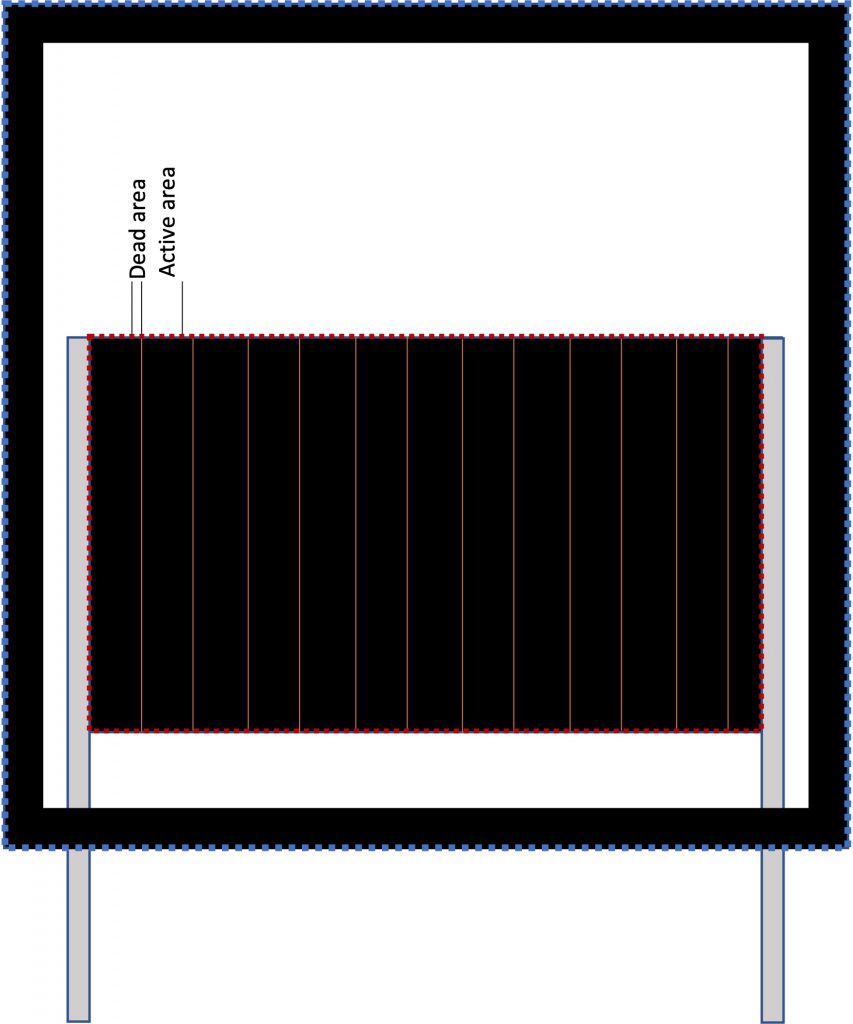PACT field performance plot – Single Junction Modules

PACT field performance plot – Multi-Junction Modules

Initial efficiency
Our calculations use daily efficiency. Daily efficiency is the daily energy delivered by the PV device divided by the daily energy incident on the device. In multi-junction modules, the daily energy delivered is the total energy delivered by all junctions, regardless of how many terminals are used to connect the module. Incident power is the irradiance measured by a broadband pyranometer (see Measurement details) multiplied by the device aperture area (see Aperture area).
We use the first acceptable day of data to calculate initial efficiency. Acceptable days are identified using the Data filtering details, below.
We do not correct power measurements for temperature, spectrum, or angle of incidence. Mature performance models are not available for perovskite PV devices in general. And devices tested in PACT are of such diverse construction and composition that batch-specific performance models would be necessary. These are also not available.
Some devices increase in daily efficiency after the first acceptable day. Our method does not base any calculation on this increased efficiency.
Days to 80%
We report the number of days before a device falls below 80% of its initial efficiency for three consecutive acceptable days. All days before this point, including unacceptable days, are counted.
Aperture area
If a physical aperture mask is present, we use the area inside it. Otherwise, we use the area of the smallest rectangle that contains the entire active area.
Site details
PACT modules are tested at three different sites:
- Sandia National Laboratories
- The Sandia field site is at 35.054972°N, -106.541049°W at approximately 1657 m above mean sea level. The test rack is a 2-axis tracker that keeps the modules normal to the Sun.
- National Renewable Energy Laboratory
- The NREL field test site is at 39.740580°N, -105.177129°W at approximately 1785 m above mean sea level. The test rack is tilted at 60° above horizontal during the winter half of the year (between the autumnal equinox and the vernal equinox) and at 20° above horizontal during the summer half of the year (between the vernal equinox and the autumnal equinox).
- CFV Labs
- The CFV Labs site is located at 34.9965723°N, -106.62086°W at approximately 1632 m above mean sea level. The test rack is fixed-tilt at 40° above horizontal.
Measurement details
Irradiance is measured in the plane of the array using an ISO 9060 class A thermopile pyranometer.
PV devices are electrically loaded and measured using calibrated in-house active electronic loads. Devices are kept at their maximum power point during daytime and at short circuit at night.
Snow on the modules or instruments is monitored using human analysis of imagery from a fixed camera.
Data filtering details
Acceptable days are those where there is no visible snow on the array or instruments, the total insolation is at least 4 kWh/m2 (this excludes completely overcast days), and complete data are present for at least 80% of the time the sun is above zero elevation.
Daily energy does not include times when irradiance data are unavailable. Insolation and daily incident energy do not include times when power data are unavailable.



